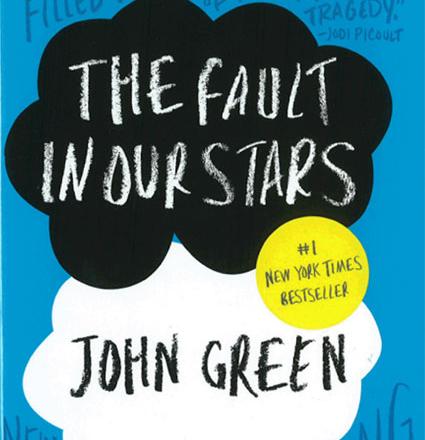We Are Iraqis: Aesthetics and Politics in a Time of War
Edited by Nadje Al-Ali and Deborah Al-Najjar
New York: Syracuse University Press, 2013, 266 pages
It is very life-affirming to see a book of such beauty about Iraq, but this is not art for art’s sake or an attempt to avoid ugly reality.
On the contrary, the writers and artists who contributed to this volume are determined to turn the trauma they face from the violence and destruction of their country into an impetus for creativity — to show the truth, to heal, to resist and build hope for the future.
In the words of Rashad Salim, “Art the world over gives body to the senses, memory to consciousness, and a door to articulate our humanity, understand our tragedies, and imagine deliverance.” (p. 249)
“We Are Iraqis” shows that Iraqis are ready to reclaim their own voice in order to counter the false images spread by the (former) US occupation authority and international media.
Their resistance via various art forms powerfully refutes racist notions about theirs being a culture of violence. Though dispersed around the world, they are coming together to resurrect and enrich their culture, using classical symbols of ancient Mesopotamia or more modern forms to portray their heritage, the ravages of war or both.
This is part of what the book title denotes. It also reasserts a united, but not monolithic, national identity in the face of the sectarian identities that have come to the fore in the last decade.
Few of the writers even refer to their religious background though it may come out in their story, as when Sinan Antoon recalls, not without irony, how he was asked to write about Iraqi Christian literature — a genre he didn’t know existed.
Yara Badday, who is of mixed Shiite-Sunni descent like many Iraqis, addresses the issue head-on while recounting her travels around all parts of Iraq in 2004 and 2009: “I do not see this battleground as a civil or sectarian war. Rather it is an amalgamation of violence and greed with innumerable players both inside and outside Iraq.” (p. 92)
An interview with Ella Habiba Shohat, “Arab-Jews, Diasporas and Multicultural Feminism”, gives a global perspective on racism and sectarianism.
Most of the contributors now live in exile. Some were born abroad; some left Iraq only recently, others during earlier waves of repression, war and sanctions.
Their contributions are diverse: Poems, essays, paintings, even a mini-play expressing the terror elicited by violence. They give voice to memory, outrage, loss, but also coping strategies for surviving chaos or the alienation of exile.
Humour is also used to unmask hypocrisy or the ironies of living in the comfort zones of the very countries that waged war on Iraq.
Art historian Nadia Shabout writes about “The Bifurcations of Iraq’s Visual Culture” — the destruction of artworks, museums and educational infrastructure, the emigration of artists, the isolation of artists who remained in Iraq as opposed to the cosmopolitanism of those in exile.
Maysaloun Faraj finds hope in the innovative art that has emerged in exile, which she gathered into an exhibition called “Strokes of Genius”.
Nadje Al Ali writes about a joint exhibition in London, “Sophisticated Ways: Destruction of an Ancient City”, bringing together Hana Malallah, who has always lived in Baghdad, and the more cosmopolitan Rashad Salim, who began to lose faith in modernity after the US invasions. “Modernising Iraq has come to mean ‘sophisticated ways of destruction’.” (p. 154)
Particularly innovative is Wafaa Bilal’s performance art: “I was sequestered in a Chicago gallery with a paintball gun aimed at me that people could shoot over the Internet.”
Acting on his philosophy “of using art to get people to examine their own attitudes… and hence hopefully reach new levels of understanding themselves and others”, he conceived the project “as a way to provoke Americans to consider the technologically remote and removed nature of modern warfare”. (pp. 95-96)
In “A Tale of Two Exiles”, Sama Alshaibi, who inscribes her art on her body, tells of reuniting with the Palestinian branch of her family when it was impossible to visit her Iraqi one.
There are other links to Palestine as when Maysoon Pachachi uses her experience of teaching filmmaking to young Palestinians to start a free, filmmaking centre in Baghdad to document reality and instil critical thinking in the new generation.
The book also includes personal narratives of trying to make a difference. In “The Assassination of Iraqi Academic Life”, Saad N. Jawad gives a moving account of teaching in Iraq for 30 years (1978-2006) “while living through one crisis after another”. (p. 48)
Maki Al Nazzal of Fallujah writes of harrowing trips to Jordan to bring children for medical treatment.
Ferial J. Ghazoul recounts poet Saadi Youssef’s lifetime of cultural resistance, calling him “a beacon for a better tomorrow”. (p. 230) In contrast, Ali Bader’s brilliant account of a conference of 600 Iraqi intellectuals in Erbil leaves little hope for the communists turned capitalists he describes.
Like art itself, this book combines the personal with the political, the material with the visionary, in order to address reality.
Rooted in history, it presents new perspectives for the future. For Iraqis to reclaim their humanity has global implications.
As pointed out by Rashad Salim, “the Iraq situation maps out the worst political, social, and environmental fears that threaten us and our planet. It is not an isolated reality but the extreme of a global trend. Unless understood… as such it won’t change, thus making the locus of the birth of Old World civilisation the herald of our New World civilisation’s end.” (p. 249)













